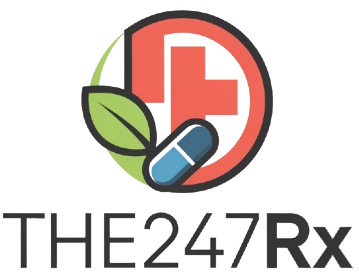Hair loss can feel like a relentless adversary, chipping away at your confidence with every stray hair. If you’re reading this, chances are you’re seeking a solution that truly works. We’ll look into two of the most talked-about treatments: Finasteride and Minoxidil.
By the end, you’ll have a clearer picture of which might be your hair’s new best friend.
The Culprits Behind Hair Loss
Before jumping into treatments, it’s crucial to grasp why hair loss happens. For many, especially men, the primary villain is dihydrotestosterone (DHT). This hormone shrinks hair follicles, leading to thinner strands and, eventually, no hair at all. Women aren’t exempt; hormonal imbalances, genetics, and other factors can also trigger hair thinning.

Finasteride: The DHT Blocker
What Is It?
Finasteride is an oral medication primarily known for treating male pattern baldness. It works by inhibiting the enzyme responsible for converting testosterone into DHT, thereby reducing hair follicle shrinkage.
Effectiveness
Studies suggest that Finasteride can halt hair loss in about 86% of men and promote regrowth in approximately 65%.
Propecia has been shown to stop hair loss in 86 percent of men who took it daily and significantly increase the production of hair in 65 percent of those taking the medication. It is recommended by the American Hair Loss Association as the first step in the treatment of male pattern baldness (Propecia (Finasteride) | Dr. Wolfeld in NYC).
However, its efficacy in women remains inconclusive, and it’s generally not recommended for them.
Side Effects
While many tolerate Finasteride well, some men report sexual side effects, including decreased libido and erectile dysfunction. It’s essential to discuss these potential risks with a healthcare provider before starting treatment.
Minoxidil: The Follicle Stimulator
What Is It?
Minoxidil is a topical solution applied directly to the scalp. Originally developed as a blood pressure medication, it was found to have the side effect of hair growth, making it a popular treatment for both men and women experiencing hair loss.
Effectiveness
Minoxidil can be effective in promoting hair growth in both men and women with androgenic alopecia. About 40% of men experience hair regrowth after 3–6 months of use. Consistency is key, and results can vary among individuals.
The clinical response to 5% topical minoxidil for the treatment of AGA is typically observed after 3 to 6 months and approximately 40% of patients show a significative improvement (Minoxidil – an overview | ScienceDirect Topics).
Side Effects
Common side effects include scalp irritation, dryness, and unwanted facial hair growth in women if the solution drips onto the face. These side effects are generally mild and subside with continued use.
Combining Forces: Finasteride and Minoxidil Together
Some studies indicate that using both treatments simultaneously can yield better results than using either alone. By attacking hair loss from different angles—Finasteride reducing DHT and Minoxidil stimulating follicles—you might achieve a more robust response. However, combining treatments also means considering the side effects of both.

Choosing the Right Treatment for You
Selecting between Finasteride and Minoxidil depends on various factors:
- Gender: Finasteride is typically for men, while Minoxidil is suitable for both men and women.
- Cause of Hair Loss: Understanding whether your hair loss is due to DHT, hormonal changes, or other factors can guide your choice.
- Side Effect Tolerance: Consider which side effects you’re willing to risk.
- Convenience: Finasteride is a once-daily pill, whereas Minoxidil requires daily topical application.
FAQs
Can women use Finasteride for hair loss?
Finasteride is generally not recommended for women, especially those who are pregnant or may become pregnant, due to potential risks to a developing fetus.
How long does it take to see results with Minoxidil?
Many users start noticing hair regrowth after 3 to 6 months of consistent use.
Do I need a prescription for these treatments?
Minoxidil is available over-the-counter, while Finasteride requires a prescription.
What happens if I stop using these treatments?
Discontinuing use typically results in the return of hair loss over time.
Are there natural alternatives to Finasteride and Minoxidil?
Some natural remedies, like saw palmetto and rosemary oil, are suggested for hair loss, but their efficacy varies, and they may not have robust scientific backing.
Hair Loss is a Personal Journey
Hair loss is a personal journey, and what works for one person might not work for another. Consulting with a healthcare professional can provide personalized advice tailored to your situation. Patience is vital; these treatments often take several months to show noticeable results. Stay consistent, monitor your progress, and keep an open dialogue with your healthcare provider to find the best path forward for your hair health.

The journey to combating hair loss is unique for everyone. Stay informed, consult professionals, and choose the path that aligns best with your needs and lifestyle.
Where to buy Finasteride and Minoxidil
Here are the most reliable and trusted sites where you can purchase Finasteride and Minoxidil products:
| HealthyRXs | ✅ Discounted prices ✅ Free shipping on orders over $200 | Visit |






